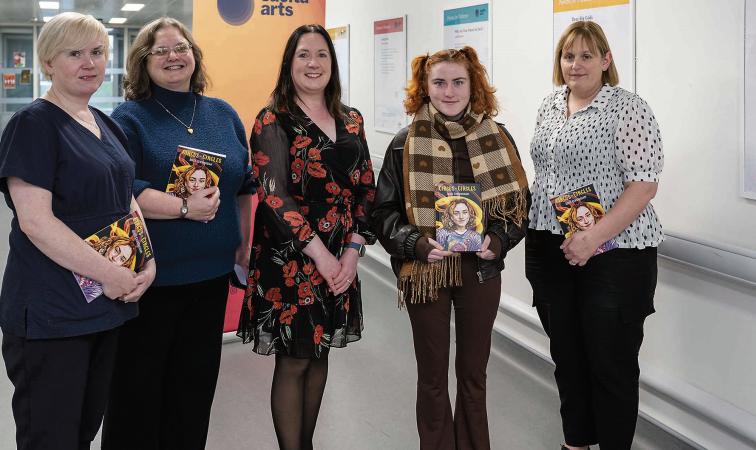-
-
Author: Our Reporter
~ 3 minutes read
The world is experiencing what experts describe as the sixth mass extinction with a number of endangered species disappearing from the planet for good.
But how much do people really care?
That’s the question posed and answered by a team of researchers, led by University of Galway in collaboration with UCD and Maynooth University.
They turned to big data and the world of culturomics to measure how we react to the demise of animals and plants and whether we mourn their loss or if we are numb to the effects.
“Culturomics is an approach where we gather large amounts of online data to understand cultural patterns,” revealed Dr Kevin Healy, School of Natural Sciences and the Ryan Institute at University of Galway.
“In our study we tracked changes in tweets, and Wikipedia page visits before and after the extinction of eight species ranging from Lonesome George, the last Pinta Island tortoise, to more obscure species such as the bean snail.”
In all, the research team analysed data of more than two million Wikipedia page visits and more than 100,000 tweets and retweets on Twitter between 2007 and 2023.
These related to eight species now extinct – including the Pinta Giant Tortoise; the Christmas Island Whiptail-skink; the Bramble Cay Mosaic-tailed Rat; the Alagoas Foliage-gleaner; Captain Cook’s Bean Snail; the Oahu Treesnail; the Rabb’s fringe-limbed treefrog and the West African black rhinoceros – to test if people increased engagement after the extinction and how global it was.
By measuring interactions on both X and visits to Wikipedia, the researchers were able to gauge how people engage with the more immediate world of social media in comparison to the expected slower paced world of an online encyclopaedia.
The study showed that while tweets, retweets and posts on X relating to a species increased after its extinction, this was only a short-lived phenomenon.
In contrast, visits to Wikipedia pages relating to an extinction had longer lasting engagement.
Dr Susan Canavan of the School of Natural Sciences, University of Galway, is lead author on the study.
“Overall, we found that people mentioned a species on twitter more often directly after its extinction, however this increase was quite short lived,” she said.
“However, when we looked at Wikipedia page visits the increase in page visits after an extinction was sustained for far longer,” she added.
The researchers also found that the most commonly used words are strongly associated with sadness and that for a brief moment even those relatively obscure species found in highly localised parts of the world are mourned across the globe.
“Overall, it does look like people care and are saddened by the news of extinction,” said Dr Canavan.
“We see words like ‘RIP’ and ‘lost’ commonly appear, and that the location of tweets expand from close to the species range, to across the globe after extinction.”
However, while people display a sense of caring on hearing news of extinction, where they hear it from, or how they hear it, was found to be an important driver in how they engage with it.
The researchers found that a small cohort of “influencers” drive the majority of engagement on X.
For example, engagement on X after the extinction of the West African black rhinoceros were heavily influenced by posts from the comedian Ricky Gervais!
The full study has been published in the journal Animal Conservation and is available at https://zslpublications.onlinelibrary.wiley.com/doi/10.1111/acv.12997.
Pictured: Dr Kevin Healy of the School of Natural Sciences at University of Galway, in a selfie in front of a T.Rex at the Senckenberg Nature Museum in Frankfurt in 2017.
For more, read this week’s Connacht Tribune:
Connacht Tribune Digital Edition App
Download the Connacht Tribune Digital Edition App to access to Galway’s best-selling newspaper. Click HERE to download it for iPhone and iPad from Apple’s App Store, or HERE to get the Android Version from Google Play.
Or purchase the Digital Edition for PC, Mac or Laptop from Pagesuite HERE.
Get the Connacht Tribune Live app
The Connacht Tribune Live app is the home of everything that is happening in Galway City and county. It’s completely FREE and features all the latest news, sport and information on what’s on in your area. Click HERE to download it for iPhone and iPad from Apple’s App Store, or HERE to get the Android Version from Google Play.
More like this:

State funding for three Galway LGBTI+ projects
This article first appeared on Galway Bay FMJust under €160,000 has been awarded to three LGBTI+ ...

Galway County Council urged to use Irish language more often in chamber
This article first appeared on Galway Bay FMGalway County Councillors and officials are being enc...

Plans for 25 new homes in Mountbellew refused permission
This article first appeared on Galway Bay FMPermission has been refused for 25 new homes in Mount...

House prices in West rising twice as fast as rest of country
This article first appeared on Galway Bay FMA new report has found that house prices in Western c...

Galway clergywoman hangs peace dove for people devastated by war
A Galway clergywoman is hanging a ‘dove of peace’ on her Christmas tree this festive season – to ...

Galway poet found her path to poetry through tough times with mental health
A young Galway poet, who began writing after a difficult period with her own mental health, last ...

Stellar line-up guarantees the festive spirit from Spiddal’s spiritual home of music
The cream of local and national talent – with a line-up that includes Mary Coughlan, Padraig Jack...

University of Galway gets funding to assess the carbon footprint of forestry products
This article first appeared on Galway Bay FMA carbon footprint assessment focusing on forest prod...

ATU Galway Researcher featured in BBC Wildlife Magazine
This article first appeared on Galway Bay FMA study by an ATU Galway researcher has been spotligh...
Sign Up To get Weekly Sports UPDATES




